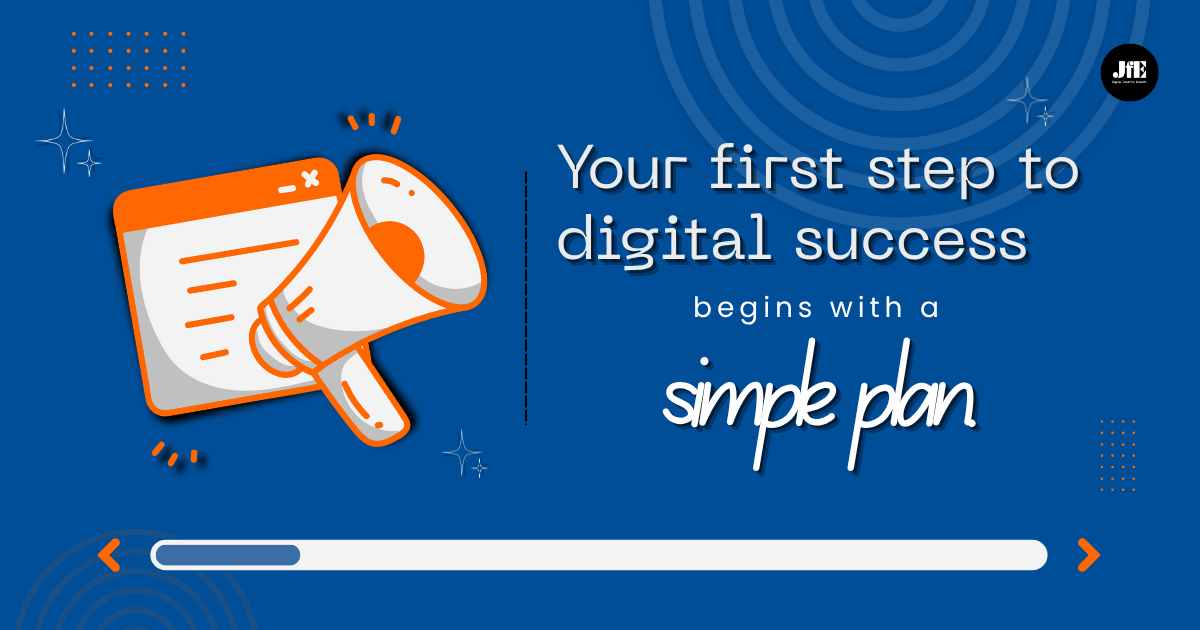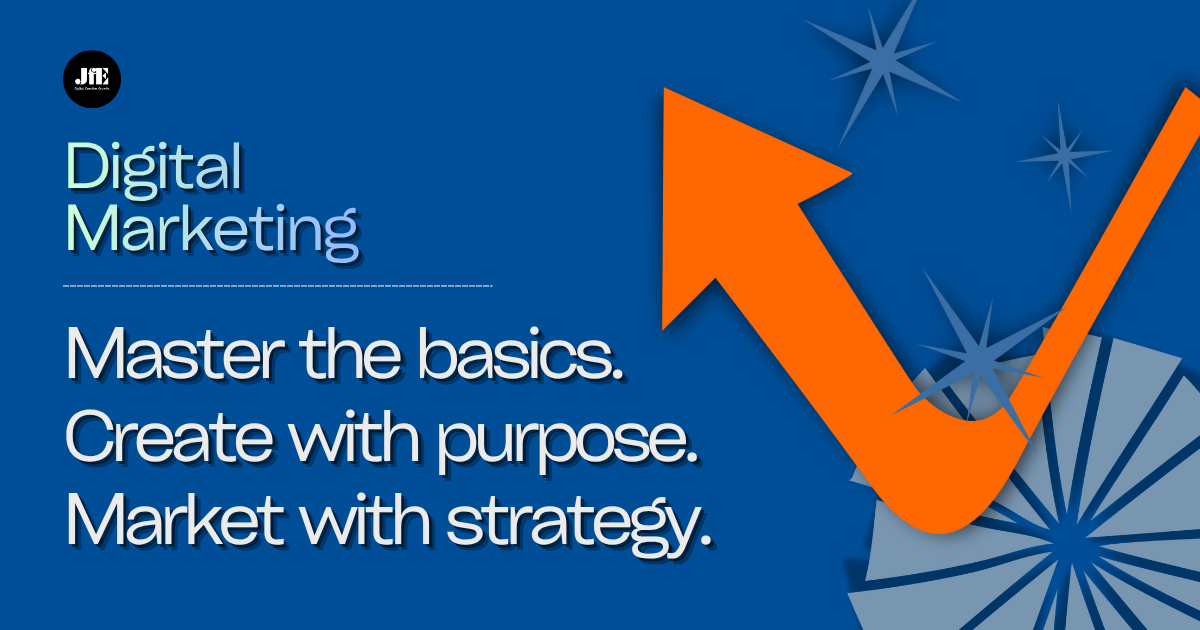Social Media Trends to Watch in 2025
"Social media is about the people. Not about your business. Provide for the people and the people will provide you.” -Matt Goulart

When you’re just starting out in digital marketing, it’s easy to get lost in the sea of advice: Facebook ads, TikTok trends, SEO, email campaigns, content funnels, and more.
But here’s the truth: you don’t need a complicated strategy to start.
What you need is a clear, beginner-friendly roadmap that helps you know where to begin and what to focus on first.
In this post, I’ll guide you step by step through building your first simple digital marketing strategy—something realistic you can apply right away, even without experience.

A strategy without a goal is like driving without a destination—you’ll waste time and energy.
Beginner mistake: Saying “I want more followers” or “I want to sell more.” That’s too vague.
Instead, set SMART goals (Specific, Measurable, Achievable, Relevant, Time-bound):
Focus on one main goal first (brand awareness, leads, or sales). Trying to chase everything at once will only overwhelm you.
You can’t market effectively if you don’t know who you’re talking to.
Ask yourself:
Example:
Action Step: Create a simple buyer persona:
This way, every post you create can speak directly to Emma, instead of to “everyone.”
You don’t have to be on every platform. Beginners often try to do Facebook, Instagram, TikTok, LinkedIn, YouTube, and blogging all at once—which leads to burnout.
Instead, pick 1–2 platforms where your audience spends the most time.
Action Step: If you’re just starting out → choose one main platform and one supporting platform.
Example: Instagram (main for engagement) + Pinterest (supporting for traffic to blog/website).
Now that you know your audience and platforms, decide what kind of content you’ll post and when.
Beginner mistake: Posting randomly (“What should I post today?”).
Instead, follow a simple structure like the 3 E’s of Content:
Action Step: Create a weekly content calendar.
Example (Instagram):
Don’t aim to post daily if you can’t keep up. Consistency beats frequency. Even 3 strong posts a week can be enough to grow.
The biggest difference between beginners and pros? Pros check their results.
Beginner mistake: Posting blindly without checking what works.
What to track:
Free tools to use:
Action Step: Every 2 weeks, review:
If tutorials get more likes than quotes → do more tutorials. If TikTok brings more traffic than Instagram → focus more on TikTok.
Your first digital marketing strategy doesn’t need to be perfect or complicated. In fact, the simpler it is, the better.
Start with this framework, and once you’re consistent, you can level up with more advanced tactics like SEO, paid ads, and email marketing.
Remember: Digital marketing is a marathon, not a sprint. Start simple, be consistent, and you’ll see progress over time.
"Social media is about the people. Not about your business. Provide for the people and the people will provide you.” -Matt Goulart
"Social media is about the people. Not about your business. Provide for the people and the people will provide you.” -Matt Goulart
Join the Newsletter
Subscribe to get my latest content by email.